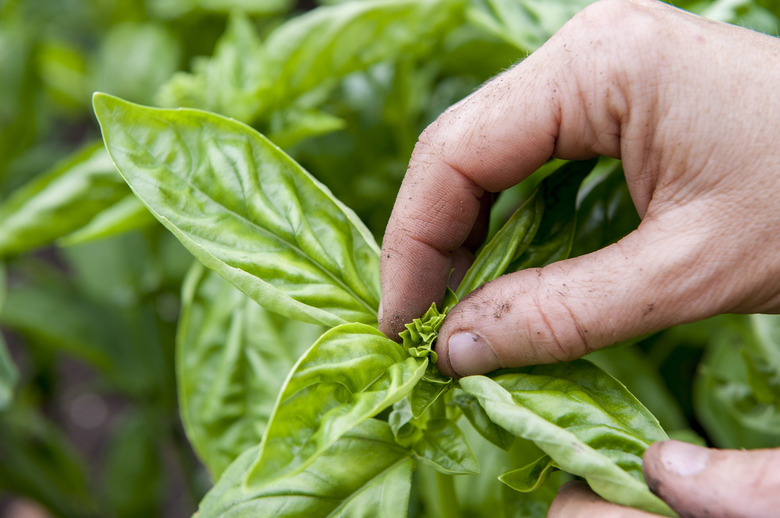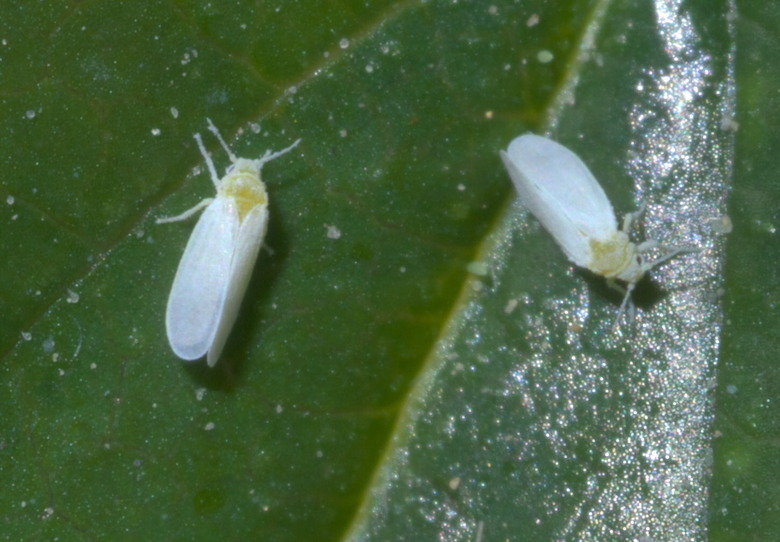What Are The Little White Flies On My Basil Plant?
While folklore has it that basil is effective in repelling flies, this does not hold true of whiteflies, which are not true flies but are similar to aphids. Whiteflies suck the sap from the leaves of plants, causing a yellowing of the leaves or even killing them.
Basil (Ocimum basilicum) is prized for its leaves and not for its fruit, and whiteflies target the very thing you planted your basil for. If your basil has developed a whitefly infestation, take quick action.
What Are Whiteflies?
Whiteflies are related to aphids, scales and mealybugs, all part of the Hemiptera order, so they are not true flies. They are primarily white with a cream-colored body and four white wings, resembling a small moth. They usually feed on the undersides of leaves, similar to aphids, and when the leaves are disturbed, the adults create a cloud of white until they resettle.
**Eggs and Pupae:** Whiteflies can be tough to identify when they are in the pupa phase or you see only some clusters of eggs. When new, the eggs are tiny, white or cream-colored; they grow darker as they age before they hatch.
**Nymphs:** After they hatch, the nymphs, called crawlers, even though they don't crawl far, look nothing like adult whiteflies. They are somewhat oval with no wings and no obvious other body parts such as legs or antennae.
The nymphs find a nice, cozy spot on their home leaf and start to feed on the leaf's phloem, the plant's vascular system, weakening its vigor. If a whitefly infestation is serious, the leaves begin to yellow, become chlorotic and eventually die.
**Honeydew Secretion:** Like aphids, whiteflies excrete honeydew, a sugary concoction that causes a black, sooty mold, which is another indicator of a whitefly invasion. In turn, the honeydew can attract ants, which deter some of the beneficial insects that would otherwise help control the whiteflies.
Plants That Whiteflies Target
There are several species of whiteflies, some of which are attracted to the leaves of vegetables and flowers, while some target trees or larger shrubs. Some gardeners and pest professionals believe that basil is not a plant that whiteflies target and that, in fact, it can act as a repellent in your garden. However, this is not proven. If you have whiteflies on your basil, you will see the damage and know they are there.
Tomatoes, Squash, Pumpkins, Broccoli, Kale and Cabbage
Some plants are particularly susceptible to whiteflies, but they have been reported on 500 different types of ornamentals, vegetables and fruit trees. In the vegetable garden, whiteflies are most prevalent on tomatoes, cucurbits such as squash and pumpkins, and cruciferous plants like broccoli, kale and cabbage.
Azaleas, Roses, Hibiscus, Fuchsia and Verbena
Among ornamentals, you are most likely to see them on azaleas, roses, hibiscus, fuchsia and verbena, among many others.
Is It OK to Eat Basil Leaves Affected by Whiteflies?
Because basil is a fast-growing plant and you eat its leaves rather than its fruit, a whitefly infestation affects your harvest more than it would on some other plants.
You probably don't want to eat a basil leaf that is infested with pupa and eggs, not because it is likely to harm you but because of the "eww" factor. So monitor the basil plants for whiteflies or any other predators, and take quick action if needed.
Warning
Avoid the use of insecticides, which can harm beneficial insects, including pollinators.
Preventing or Removing Whiteflies
How can you prevent whiteflies on basil? Let's look at some of your options:
- **Spraying with Water:** Your first line of defense against a whitefly invasion is your garden hose. Spray infected leaves to remove the pupae and eggs or any sooty mold that has developed.
- **Reflective Mulches:** If you know your garden has been affected by whiteflies in the past, consider using "reflective" mulches, i.e., plastic, as these are known to deter various flying insects, including whiteflies.
- **Sticky Traps:** Yellow, sticky whitefly traps can be useful in catching and killing whiteflies, but sometimes these are more effective in only monitoring the level of infestation because they don't kill large quantities.
- **Biological Predators:** Next up for control is to encourage or introduce biological predators, which include lacewings, big-eyed bugs, lady beetles and minute pirate bugs.
- **Neem Oil and Insecticidal Soaps:** You can also spray the plants with insecticidal soaps or neem oil; read the directions carefully to ensure you don't burn your plants, and don't apply it within a week of harvest.
Avoid insecticides though, as they can harm pollinators and are reported by experts to be not that helpful against whiteflies, because the pests develop an immunity to them.

